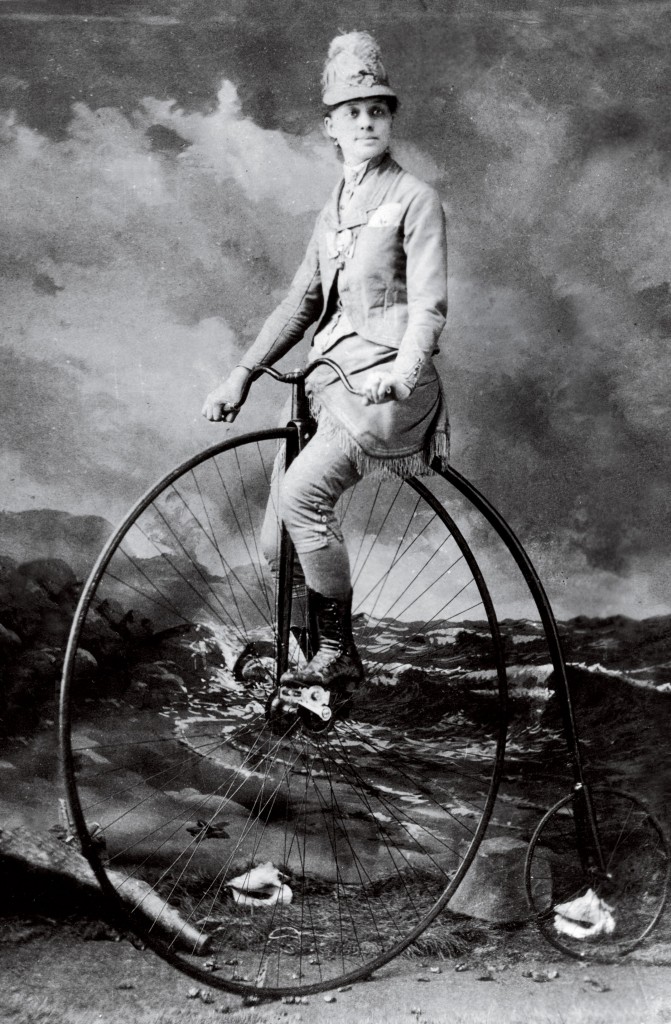Trailblazing female bike racers of the 1880s

As well as being a keen cyclist, I am also a lover of social history and when I get to combine two things of interest I’m pretty content.
I have a great book called Wheels of Change by Sue Macy in my home library and thought I would share a story I enjoyed.
If you think that female cyclists in the past 20 or so years have been real trailblazers then think again, because the true trailblazers where the women that were racer bicycles way back in the late 1800s.
An early American racer Elsa von Blumen of Rochester New York saw herself as a role model for good health, particularly for women. She was quoted as saying in an article for The Bicycling World in 1881:
“In presenting myself to the public in my bicycle exercises, I feel I am not only offering the most novel and fascinating entertainment now before the people, but am demonstrating the great need of American young ladies, especially, of physical culture and bodily exercise.
“Success in life depends as much upon a vigorous and healthy body as upon a clear and active mind. In my travels I daily see hundreds of ladies, and even gentlemen, with flat chests and narrow shoulders, and a shuffling gait, — the result of neglecting the needs of the body. My experience as a bicycle athlete has beyond question saved me from a consumptive decline. In my rides while I am willing to compete in friendly rivalry not only with gentlemen but with horses, I will countenance no wagering or gambling. The respectability which have characterised my performances in the past will be maintained in the present entertainments; and believing that all lovers of health and physical vigour will award me their approbation and patronage.”
So not only was she a trailblazer in actually riding a bike, she also understood the benefits of exercise on maintaining your health.
von Blumen and her fellow female racers took on anyone who would race against them included men, horses and occasionally dogs. They raced on the road and specially built tracks (early velodromes I assume) in both short and long events, often competing for money or prizes. They also sustained injuries on a regular basis but kept coming back for more and attracted large crowds.
I also found another reference for Elsa von Blumen that said in 1881 she rode 1,000 miles during a six day marathon in Pittsburgh, “although toward the end she had to be propped up on her bicycle and given stimulants”. An early drug scandal, perhaps.
The bicycle that Elsa rode was known as a high wheel bicycle. Pedals were attached directly to the front wheel, with no freewheeling mechanism. Solid rubber tires and the long spokes of the front wheel provided a smoother ride than its predecessor. The front wheels became larger because the larger the wheel, the farther you could travel with one rotation of the pedals. You would buy a wheel as large as your leg length would allow.
One problem with them was that because the rider sat so high above the centre of gravity, if the front wheel was stopped by a stone or rut in the road (which I assume was fairly common), the entire apparatus rotated forward on its front axle, and the rider, with her legs trapped under the handlebars, was dropped unceremoniously on her head which became known as “taking a header”. Thankfully that’s not such a common injury in modern times.

Great article Nicola. Do you know what sort of speeds they were able to achieve on those high wheel bikes?
Thanks Cat. I’ve not found any reference to their speeds. I figure they probably rode fairly fast over flat ground – 25 km/hour or more but I bet they struggled up any hills!